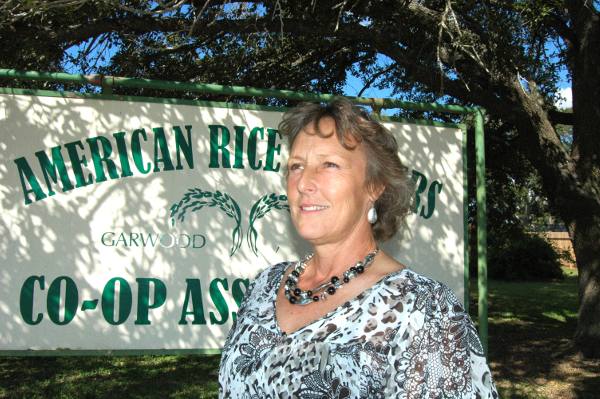November 14, 2012

Vivian Spanihel is among many in the Texas rice industry who wonders what the next farm bill will finally provide for farmers caught between high costs of production and a price that doesn’t always offer a profit.
“Farmers are trying to make economic decisions not knowing what’s going on,” says Spanihel, manager of the American Rice Growers Association cooperative in Garwood. “They know they’ll probably not see direct payments in the new farm bill.”
While some growers have a massive market for their rice through major co-ops like Riceland, many Texas growers depend on smaller co-ops like ARGA to market their rice.
ARGA represents growers in Jackson, Lavaca, Wharton, Colorado and Austin counties. Growers harvest their lots in fields, then take the rice to driers. “I grade the rice to establish a loan value based on quality,” says Spanihel. “The lots are then put for sale for mills to look at and make bids.”
Two large mills, American Rice, Inc. and Gulf Rice Milling, both headquartered in Houston, are among those that bid for the rice. There’s also the Colorado County Rice Mill at Eagle Lake west of Houston.
A federal loan rate of $6.50 to $6.70 per hundredweight is far below a typical cost of production of $1,100 to $1,200 per acre, Spanihel says. So growers push for the highest premium they can receive from mills.
“The mills look for the ratio of whole grains to the total kernel,” Spanihel says. “We’re seeing some good quality from our rice this year.”
Premium price
The premium this year is in the $8.25 to $8.50 per hundredweight range, putting typical prices to growers at about $15 per hundredweight. So there is reasonable price potential if production costs don’t get out of hand. However, prices can become depressed, depending on foreign production and U.S. and export demand. For example, prices in 2005 and 2006 were in the $7 to $8 per hundredweight range.
If prices drop, then the safety net offered by the farm program can get attention.
The House version of the farm bill suits Texas rice growers more than the Senate bill, Spanihel says, adding that the House version gives growers the option to set a target price for rice, while the Senate bill does not. Both bills do away with direct payments, which have helped provide a needed safety net for rice farmers.
The USA Rice Federation, which is the global advocate for the U.S. rice industry, backs the House version of the 2012 farm bill over the Senate version. It commended theHouse Ag committee for recognizing that “a one-size-fits-all approach to farm policy is not workable for all producers and regions.
“Instead, the House bill takes the positive step of acknowledging the diverse agriculture sector by offering a meaningful choice of risk management tools for all producers, crops and regions of the country while working to ensure that the choices offered to producers focus on addressing serious and sustained periods of losses.
“The House farm bill’s price loss coverage and revenue loss coverage options allow producers to focus risk management on the primary risk for their crops and region. USA Rice supports efforts to ensure that both the price loss and revenue loss coverage trigger levels are set at the highest possible levels to provide effective protection against price and revenue declines.”
USA Rice says that while the House bill would lower the adjusted gross income means test for eligibility, it would not set punitive levels of payment limitations or alter actively engaged rules established just two years ago after the historic reforms in 2008.
“We believe these reforms, achieved with substantial budget savings, are positive for taxpayers and workable for producers,” USA Rice says.
Texas rice acres continued to decline this year, down to about 131,000 from 600,000 several years ago. The drought and the lack of water available for irrigation are among the reasons for 50,000 fewer acres this year, Spanihel says, noting that the ARGA group is now down to about 60 growers.
Some are able to take advantage of specialty markets, such as those for organic rice. Much of the organic is sold through Doguet’s Rice Milling Co. in Beaumont.
The wait now is for the Republican-controlled House to vote on its version of the farm bill then work with the Democrat-controlled Senate to come up with legislation that can serve rice farmers and others.
“We’re also looking at the potential to export rice to China,” she says. “That would be a big market for our rice.”
About the Author(s)
You May Also Like




